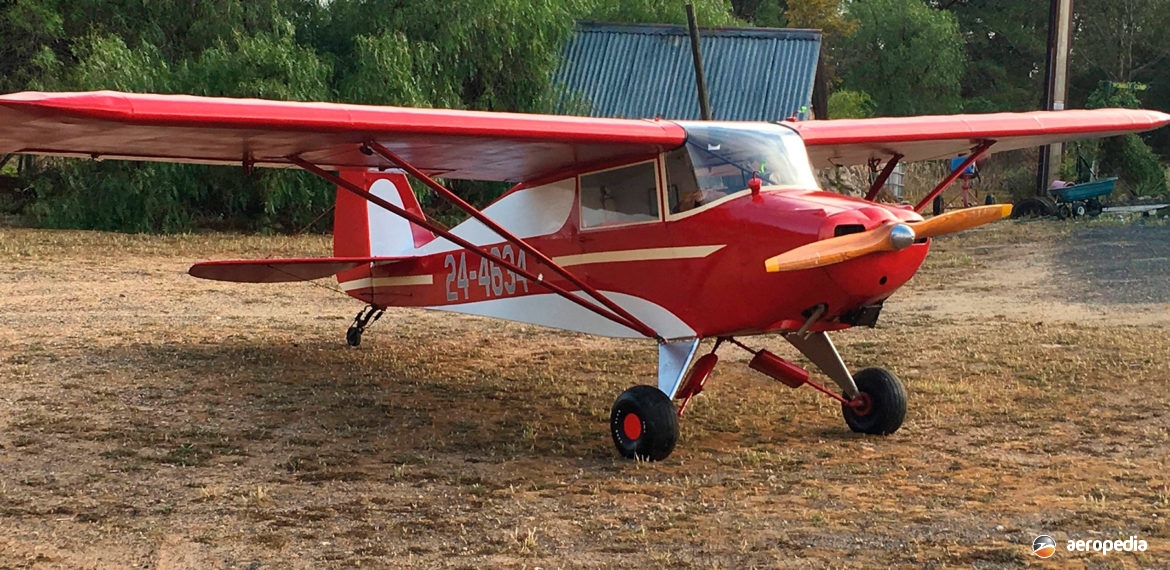Photograph:
Piper PA-17 Vagabond 24-4634 (c/n 15-380) at Sherlock, SA 2019 (T Helybut)
Country of origin:
United States of America
Description:
Two-seat sport and training monoplane
Power Plant:
One 48 kw (65 hp) Lycoming O-145-B2 four-cylinder horizontally-opposed air-cooled engine
Specifications:
- Wingspan: 8.93 m (29 ft 3¼ in)
- Length: 5.68 m (18 ft 8 in)
- Height: 1.82 m (6 ft)
- Wing area: 13.70 m² (147.5 sq ft)
- Max speed at sea level: 164 km/h (102 mph)
- Cruising speed at 610 m (2,000 ft): 148 km/h (92 mph)
- Stalling speed: 72 km/h (45 mph)
- Initial rate of climb: 155 m/min (510 ft/min)
- Service ceiling: 3,810 m (12,500 ft)
- Range: 410 km (255 miles)
- Fuel capacity: 45 litres (9 Imp gals)
- Take-off roll: 274 m (900 ft)
- Landing roll: 91 m (300 ft)
- Take-off over 15 m (50 ft) obstacle: 479 m (1,570 ft)
- Landing over 15 m (50 ft) obstacle: 390 m (1,280 ft)
- Empty weight: 281 kg (620 lb)
- Usable load: 218 kg (480 lb)
- Loaded weight: 499 kg (1,100 lb)
History:
The Piper Aircraft Corp in 1947 re-organised its operating procedures and worked towards introducing a new model, the two-seat side-by-side PA-15 Vagabond powered by a 48 kw (65 hp) Lycoming O-145 engine. Designed by David Long, the prototype flew for the first time on 29 October 1947 and, after initial flight testing, entered production in 1948. Early production aircraft were sold primarily to fill the training role. It was considered to be an exceptionally stable aircraft, stalls being gentle with a quick recovery, and was sensitive to handling. Type Certification was issued in 1948 and construction took place at the Piper facility at Lock Haven in Pennsylvania.
The PA-15 was announced to the market in January 1947, the prototype NX5000H (c/n 15-1) flying for the first time on 29 October 1947, the first production aircraft being delivered in February 1948, Type Certificate A800 being issued on 1 July 1948. Production concluded in July 1948 after 387 aircraft had been delivered, with one more being built to PA-15 configuration, being a PA-17 converted.
The fuselage was of welded steel tube, faired to shape and fabric covered. The wing was of solid spruce spar beams, the framework being covered with fabric. No Vagabond has appeared on the civil registers of Australia and New Zealand, but an example was imported from South Africa in about 2006 and registered with the RAA as 24-4634 (c/n 15-380 – ex ZS-BZK) on 7 April 2006, operating for a period in Perth, WA before moving to Bundaberg, QLD. It was later sold in South Australia where it has become known as “Tim’s Chubby Cubby”.

